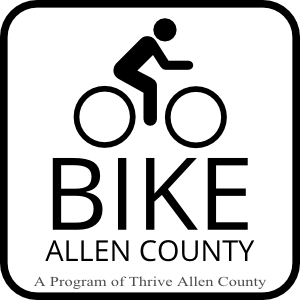An interesting article was recently posted in the Iola Register, explaining some of the history behind the Southwind Rail Trail:
Southwind trail’s origins shared
By BOB JOHNSON The Iola RegisterAbout 145 years ago the first Leavenworth, Lawrence and Galveston Railroad steam locomotive huffed and puffed its way through Iola and on south to Humboldt. Horses and livestock no doubt were spooked by the newfangled contraption.
The tracks have been gone from the old LLG right of way for 15 years, when South Kansas and Oklahoma Railroad gave up the ghost. Now, bicyclists, walkers and joggers use it from Iola to Humboldt, christened the Southwind Rail Trail with its grand opening two years ago next month.
Jay Kretzmeier, a Southwind volunteer and Rotary member, reviewed the trail’s development in words and photos for others in the club Thursday. He showed video shot during his first two-wheel excursion of the trail in 2012 when it still was a mass of undergrowth and in places next to impassable. Fast forward a year and another video showed the trail ready to open, with a surface of compressed lime-stone and a picturesque crossing of Elm Creek on the old railroad bridge.
The right of way, 100 feet wide, was purchased in 1870 by LLG for $30 an acre. Later the Atchison, Topeka and Santa Fe had as many as four passenger trains and a number of freights making daily runs between Kansas City and Tulsa.
When economics prompted ATSF, and other major rail companies, to limit their routes, SKO came into the picture to haul freight, including Monarch cement from Humboldt and grain, locally. That ended when SKO cut its tracks at Hum-boldt, leaving a salvage company to remove rails and ties north to Iola.
Meanwhile, the National Trail Systems Act of 1968 permitted abandoned rights of way to be railbanked, a procedure that keeps them in place on the off chance of future use. The process also opened rights of way to trails limited to bicycles and foot traffic. The federal act precludes revisionary rights of adjacent landowners, which may have been invoked under abandonment. When SKO pulled out, right of way south of Iola became ward of the Sunflower Rail-Trail Conservancy, which opened it to trail development. On board to make it possible were Healthcare Foundation of Greater Kansas City and the Sunflower Foundation, with grants, as well as Thrive Allen County, Allen County commis-sioners and a group of dedicated volunteers.
The trail covers 6.5 miles from Riverside Park to the north edge of K-224, a spur from U.S. 169 to the north edge of Humboldt. Having B&W Trailer Hitches’ production facilities nearby has been a boon for the trail; several workers who live in Iola use the trail when weather permits to ride bicycles to and from work.
Joe Works, B&W owner, recognized its benefits — he “and B&W are a godsend,” said Kretzmeier — and has been a major benefactor, as has Humboldt’s Monarch Cement Co. Westar, with a depot a short distance from the south entrance, also has helped by constructing a kiosk of recycled material, including old utility poles, at the south end. Iola Rotary Club built a shelter adjacent to the trail near its intersection with Massachusetts Road, about halfway to Humboldt.
Southwind Rail Trail connects at its north end to the Prairie Spirit Trail, operated by the Kansas Department of Wildlife and Parks, with day or annual passes required for use. No charge is made for Southwind. With the two trails being together, a user may go from Humboldt to Ottawa, and before long will have the possibility of side journeys on a trail being developed on the old Lehigh Cement Co. property at the south edge of Iola and a concrete one along part of the Missouri Pacific right of way in mid-Iola.
Kretzmeier lauded the efforts of volunteers who worked doggedly to clear the trail so that Allen County could surface it, with all accomplished in about a year’s time. He also said users and volunteers have strove to be good neighbors to property owners along the trail, although “not all have been accepting.”
As for such issues of trash being left on the trail, Kretzmeier said the experience had been that if one user dropped a candy wrapper or fast food sack, four others almost vied to see who could pick it up. Rotary President Bob Hawk said he noticed before the Prairie Spirit Trail opened, careless use and vandalism of the old ATSF right of way was common, but disappeared when the Prairie Spirit trail opened.
It is interesting to note that the railroad purchased the right-of-way outright, rather than through an easement. Since the land was purchased fee simple, it precludes any reversionary claims from adjoining landowners along the corridor.
See also: Allen County Is Model For Kansas Trail Development, which discusses the critical role that Allen County commissioners played in the development of the Southwind.

